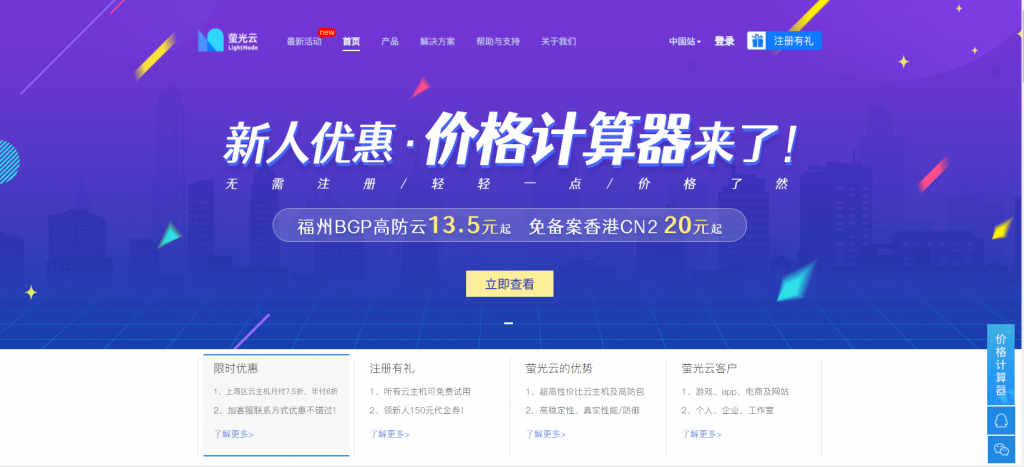mixhttp
http://t66y.com 时间:2021-04-09 阅读:()
RESEARCHOpenAccessAsetofnovelmultiplexTaqmanreal-timePCRsforthedetectionofdiarrhoeagenicEscherichiacolianditsuseindeterminingtheprevalenceofEPECandEAECinauniversityhospitalChristophHardegen1,SabineMessler1,BirgitHenrich1,KlausPfeffer1,JensWürthner2,ColinRMacKenzie1*AbstractBackground:AccuratemeasurementoftheincidenceofdiarrhoeagenicE.
coliinpatientswithdiarrhoeaishinderedbythecurrentmethodsofdetectionandvariesfromcountrytocountry.
InordertoimprovethediagnosisofdiarrhoeagenicE.
coli(DEC),wedevelopedasetofmultiplexTaqManreal-timePCRsdesignedtodetecttherespectivepathogensfromanovernightstoolculture.
Methods:OvertheperiodJan.
2006toDec.
2006allstoolspecimens(n=1981)receivedwereinvestigatedforEPECandEAEC.
Results:Ofthese,371specimenshadnogrowthofEnterobacteriaceae.
Oftheremaining1610specimens144(8,9%)werepositiveforEPECand78(4,8%)positiveforEAEC.
AmongtheEPECpositivestoolspecimens28(19,4%)werereceivedfromthetropicaldiseasesunit,49(34%)fromthepaediatricdept.
and67(46,5%)fromtheremainderofthewards.
TheEAECweredistributedasfollows:39(50%)-tropicaldiseases,19(24,4%)-paediatricsand20(25,6%)otherwards.
ProportionatelymoreEAECandEPECwerefoundinchildrenlessthan3yearsofagethanotheragegroups.
Inonly22,2%ofthedetectedEPECand23%ofEAECwastheinvestigationrequestedbyhospitalstaff.
Conclusions:Thisis,toourknowledge,thefirststudyusingamultiplexTaqManPCRforthesuccessfuldetectionofdiarrhoeagenicE.
coli.
Inconclusion,duetothehighprevalenceofDECdetected,investigationofEPECandEAECshouldberecommendedasaroutinediagnostictestforpatientswithinfectiousdiarrhoea.
BackgroundInfectiousdiarrhoeaisacommoncomplaintamongpatientsseekingmedicaladviceand,despiteprogressindiagnosisandtreatment,remainsoneoftheleadingcausesofmorbidityandmortalityworldwide[1,2].
Thespectrumofpathogensresponsibleforsuchinfec-tionsvarieswithageandgeographicallocation.
Aviralpathogenesisisprobablythemaincauseofdiarrhoeainindustrialisedcountries[1,3],howeversystematicsurveyshaveshownthatdiarrhoeagenicE.
coli(DEC)areacommoncauseofdiarrhoeainbothdevelopinganddevelopedcountries.
Thesepathogens,especiallyEAEC,mayroutinelybeunderestimatedasacauseofdiarrhoeaduetounder-representationofrequestsanddifficultyrecognisingthesepathogensinthelaboratory[4,5].
TodatesixcategoriesofDEChavebeendefinedonthebasisofspecificvirulenceproperties[6,7].
Entero-toxigenicE.
coli(ETEC)causediarrhoeaviasecretionofheatstable(ST)and/orheatlabile(LT)enterotoxin.
EnteroinvasiveE.
coli(EIEC)strainsarecloselyrelatedtoShigellaspp.
andtheresponsiblegenesarecarriedonthepINVplasmid.
Shiga-toxinproducingorenterohae-morrhagicE.
coli(STEC/EHEC)causebothanon-bloodydiarrhoeaaswellasahaemorrhagiccolitiswhichmaytriggerhaemolyticuraemicsyndrome(HUS).
ThevirulencepropertiesdefiningEHECaretheShigatoxins*Correspondence:colin.
mackenzie@uni-duesseldorf.
deContributedequally1InstituteofMedicalMicrobiologyandHospitalHygiene,Heinrich-Heine-University,Universittsstrae1,40225Düsseldorf,GermanyHardegenetal.
AnnalsofClinicalMicrobiologyandAntimicrobials2010,9:5http://www.
ann-clinmicrob.
com/content/9/1/52010Hardegenetal;licenseeBioMedCentralLtd.
ThisisanOpenAccessarticledistributedunderthetermsoftheCreativeCommonsAttributionLicense(http://creativecommons.
org/licenses/by/2.
0),whichpermitsunrestricteduse,distribution,andreproductioninanymedium,providedtheoriginalworkisproperlycited.
1and2(Stx1,Stx2)and,whenpresent,thepathogeni-cityislandLEE("locusofenterocyteeffacement").
Enter-opathogenicE.
coli(EPEC)showlocalisedadherencetothesmallintestineandcauseahistopathological"attach-ingandeffacing(A/E)lesion"mediatedthroughviru-lencefactorsencodedwithintheLEE.
StrainsadditionallycontainingtheEPECadherencefactor(EAF)plasmidhavebeentermed"typical"EPEC,whereasstrainsthatlacktheEAFplasmidarereferredtoas"atypical"EPEC.
EnteroaggregativeE.
coli(EAECorEAggEC)wasfirstdescribedin1987[8]andhasbeenassociatedwithacutediarrhoeainchildren,HIVpositiveindividuals,andasacauseoftravellers'diar-rhoea[9].
Moreoverithasbeenlinkedtopersistentdiarrhoeaandevengrowthretardationinchildren[10].
Numerousfindingssuggestthatthereisaninflamma-toryprocessunderlyingtheinfection[11,12].
ThePCR-targetusedinthisreportisasequenceontheplasmidpCVD432onwhichthegenescodingforthefimbrialstructure(aggregativeadherencefimbriaI)andfurthervirulencefactorsarelocated[13].
ThesixthcategoryisthediffuselyadherentE.
coli(DAEC)inwhichthebac-teria,unlikeEAECdonotadheretothehostcellsinmicrocoloniesbutratherdiffuselyoverthecellsurface.
NoPCRhasbeendevelopedyettodetectDAECstrains.
SinceDECcannotbediagnosedadequatelybycultureandbiochemicalcriteriaalone,identificationofthesestrainsisdifficult.
ManyPCRtechniquesdetectingvar-iousgenescodingforvirulencetraitsofthedifferentcategoriesofDEChavebeenreported[14-18].
WehavedevelopedthreenewmultiplexTaqManPCRassays,designedtoberuninparallel,todetectETEC,EIEC,EHEC,EPECandEAECsimultaneously.
InadditiontomanystudiesfromdevelopingcountriesrecentreportsunderlinetheimportanceofEPECandEAECindevelopedcountries[5,19-21].
InGermanyverylimiteddataareavailable.
ThereforetheaimofthisstudywastoevaluatethelocalimportanceofEPECandEAECinaGermanUniversityhospitalinrelationtotherequestingclinicaldepartmentandagegroup,usingthenewlydevelopedreal-timePCRasadiagnostictool.
MethodsStudypopulationFromJanuary2006toDecember2006atotalof1981faecalsamplesreceivedforSalmonella,ShigellaandCampylobacterspp.
culturewereincludedinthescreen-ingforEPECandEAEC.
Ofthese371specimenshadnogrowthofEnterobacteriaceaehence1610samplesweretestedforEPECandEAECbyuseofthePCRmethoddescribedbelow.
StoolsampleswereobtainedfrommostdepartmentsoftheUniversityHospitalofDüsseldorf,Germany.
Thepatientagerangedfromafewdaysto98years.
DNApreparationAllfaecalsamplesreceivedwereplatedonMacConkeyAgarandincubatedfor18hat37°C.
Abacterialsus-pensionfromallcolonieswasmadebyrinsingtheentireplatewith2mlofsterilesaline.
Thebacterialsuspen-sionwasdilutedtoMacFarlandStandard1,0(approx.
3*108CFU/ml)usingdistilledwater.
Thissuspensionwasheatedat95°Cfor15minutes.
2,5μl(correspond-ingtoapproximately7,5*105CFU)wereapplieddirectlytothemultiplexPCR.
Theremainderofthesamplewasstoredat-20°C.
TaqManPCRThreedifferentmultiplexTaqManPCRsweredesignedandwereallrunusingthesametimeandtemperaturesettingsonaBioradiCyclersystem.
Atwostepamplifi-cationprofilewasusedasfollows:95°Cfor10min.
fol-lowedby45cyclesof15s.
at95°Cand60s.
at60°Cforannealingandelongation.
ThePCRcontained10pmolofeachprimer,2pmolofthetargetprobes,5pmoloftheinternalinhibitioncontrolprobe(allfromEurogen-tec,Cologne,Germany),100copiesofinhibitioncontrolplasmid,2,5μlsample,12,5μlofNoROXPCRMaster-mix(Qiagen,Hilden,Germany)andwasdilutedwithdistilledwatertoafinalvolumeof25μl.
TwotargetsequenceswereusedforEPECamplifica-tion:a107bpsequenceoftheenteropathogenicE.
coliadherencefactor(EAF)plasmid[22]anda189bplongfragmentoftheintimingene(eae)withinthelocusofenterocyteeffacementbaseduponanalignmentofvar-iouspublishedintiminsubtypesequences(designedwithsupportofTIBMOLBIOL,Berlin,Germany).
ThetargetsequenceforEAECwasa152bpsequenceofthepCVD432plasmid[23].
ThesecondmultiplexPCRwasdesignedtodetectETECandEIEC.
TargetsforETECwerea107bpfragmentoftheSTanda113bpsequenceoftheLTgene.
ForEIECa107bpsequenceofthevirulenceplasmidessentialforinvasiveness,pINVwastargeted.
ThethirdPCRdetectsEHECbytargetinga87bpfragmentoftheshiga-toxin1(stx1)anda82bpsequenceoftheshiga-toxin2(stx2)gene.
AllprobeswerelabelledwithfluorophoresandquenchersaslistedinTable1.
IsolatesofsequencedpathogensservedaspositivecontrolswhileanonpathogenicE.
colistrain(ATCC25922)wasusedasnegativecontrol.
SincethesequencesofpINVandstx1arealsopresentinshigella,inallspecimenspositiveforeitheroftheseaninfectionduetoshigellawasexcludedbyculture.
PCR-baseddetectionmethods,especiallyfromfaecalsamplesarepronetoinhibitionofamplification[24].
Asaninternalcontrol(IC)specimenswerespikedwithsynthesisednucleotidesequencesusinganunrelatedprobesequencefromtheretrotransposonNinjafromDrosophilasimulans(AB110070)inthepCRII-TOPOVector(Invitrogen,Karlsruhe,Germany)flankedbytheHardegenetal.
AnnalsofClinicalMicrobiologyandAntimicrobials2010,9:5http://www.
ann-clinmicrob.
com/content/9/1/5Page2of7respectiveprimersusedinthePCR[25].
Aserialdilu-tionoftargetedtemplateinaMacFarlandstandard1,0apathogenicE.
colisuspensionrevealedreliablefluores-cencesignalstoameannumberof1,5bacterialgen-omesper2,5μlforalltargets.
Nocrossreactivitywithvariousbacteria(Streptococcus,Staphylococcus,Entero-coccus,Pseudomonas,Klebsiella,Proteus,Citrobacter,Salmonella,Yersinia,Campylobacter,Aeromonascaviae,ClostridiumdifficileandEnterobacterspp.
)otherthantheknownpositivitywithShigelladysenteriaeusingtheEHECPCRwasdetected.
ResultsAllstoolsampleswereobtainedfromtheUniversityHospitalofDüsseldorf.
Altogether144(8,9%)specimenswerepositiveforEPECand78(4,8%)positiveforEAEC,including17samplesthatwerepositiveforbothpatho-gens.
AnexampleofanamplificationplotofadoubleinfectionisshowninFig.
1.
FromthesamplespositiveforEPEConly7(4,9%)werepositiveforbotheaeandEAF(typicalEPEC),makingatypicalEPECthepredomi-nantpathotype.
FivesampleswerepositiveforEAFonly.
Alleaepositivespecimenswereadditionallyexam-inedforthepresenceofstx1andstx2andwereallnega-tive.
IncomparisontotheseresultsSalmonellaspp.
wasfoundin38(2,4%),Campylobacterspp.
in39(2,4%)andShigellaspp.
inonly1(0,06%).
Thedataweredividedintothreegroupsdependingontherequestingdepartment:thedepartmentfortropicaldiseases,paediatricsandalastgroupofalltheTable1PrimersandprobesformultiplexTaqManPCRTargetPrimerorprobenameOligonucleotidesequence(5'3')Ampliconsize/Accessionnr.
Multiplex1:(EPEC/EAEC)EAFEP-1forEP-2revEP-SprobeGTTCTTGGCGAACAGGCTTGTCTTAAGCCAGCTACCATCCACCCCy5-AGTACTGACGTGCAGGTCGCCTGTTCG-BHQ-3107bpX76137eaeEAE-SforEAE-B1revEAE-B2revEAE-TMprobeACTGGACTTCTTATTRCCGTTCTATGCTAAGCGGGTATTGTTACCAGACCTAAACGGGTATTATCACCAGAROX-AATCCTGATCAATGAAGACGTTATAGCCCA-BBQ189bp*Z11541/AB040740pCVD432EA-1forEA-2revEA-SprobeAGGTTTGATATTGATGTCCTTGAGGATCAGCTAATAATGTATAGAAATCCGCTGTTFAM-CATGTTCCTGAGAGTGCAATCCCAGACATTAC-TAMRA152bpX81423Multiplex2:(ETEC/EIEC)STgeneST-1forST-2revST-SprobeCTGGTTTTGATTCAAATGTTCGTGTCCTGAGGGAAAGGTGAAAAAGACROX-TTGATTTCTTCATATTACCTCCGGACATGGCA-BHQ-2107bpM34916LTgeneLT-1forLT-2revLT-SprobeAGCGGCGCAACATTTCAGTTGGTCTCGGTCAGATATGTGATTCFAM-TCGAAGTCCCGGGCAGTCAACATATAGA-TAMRA113bpS60731ipaHEi-1forEi-2revEi-SprobeGAACTCAAATCTTGCACCATTCACGTCCGTCCGAGAACAATTAAGCy5-ATCCCCGACACCGTTTGTGAGTTTCACT-BHQ-3107bpAY206439Multiplex3:(EHEC)stx1slt1-1forslt1-2revslt1-SprobeCTTCCATCTGCCGGACACATAATTAATACTGAATTGTCATCATCATGCATROX-AAGGAAACTCATCAGATGCCATTCTGGCA-BHQ-287bpZ36899stx2slt2-1forslt2-2revslt2-SprobeGACGTGGACCTCACTCTGAACTGTCCCCACTCTGACACCATCCFAM-TACTCCGGAAGCACATTGCTGATTCGC-TAMRA82bpL11079InternalControlDrosophilasimulans+ICprobeHEX-ATGCCTCTTCACATTGCTCCACCTTTCCT-BHQ1AB110070+Thebold,italiclabelledprimersalsodetecttheinternalcontrolplasmidintherespectivePCR*AlignmentofvariousintiminsubtypesequencesHardegenetal.
AnnalsofClinicalMicrobiologyandAntimicrobials2010,9:5http://www.
ann-clinmicrob.
com/content/9/1/5Page3of7remainingdepartments.
Thedepartmentfortropicaldis-easesgroupconsistedof150samplesonlybuthadarelativelyhighpositivityratewith28EPECpositiveand39EAECpositivesamples.
18,7%ofallspecimenstestedwithinthisgroupwerepositiveforEPECand26%forEAEC.
Mostpatientsseeninthisdepartmenthaveatra-velhistoryand,withtheexceptionofonly4patients,allwerebetween18and65yearsofage.
Fromthepaedia-tricwards458specimensweretestedand49EPECposi-tiveand19EAECpositivesamplesweredetectedshowinganprevalenceof10,7%forEPECand4,1%forEAEC.
Fromtheremaining1002samplesfromallotherdepartments67(6,7%)weretestedpositiveforEPECand20(2%)positiveforEAEC.
Table2showstheresults.
SincemostreportsonDECshowdifferentincidencesdependingonagewedividedthesamplesaccordingtoagegroupsasseeninFig.
2.
ApeakprevalenceforEPECwasfound(16,3%)intheagegroupbetweenoneandtwoyears.
Intheagegroupsofpatientsbelowoneyearofageandbetweentwoandfiveyearsthepreva-lencevariedfrom9,1%to10,2%,whichisslightlyhigherthaninthegroupsbetweenfiveand18years(7,6%)andthegroupabove65yearsofage(4,9%).
Theprevalenceinthegroupbetween18and65years(10,2%)wasunex-pectedlyhigh,butofthe74positivesamples26weresentbythetropicaldiseasesdepartment,indicatingahistoryoftravel.
Withoneexception(onepositivespeci-menintheagegroupbelowoneyear),allspecimensfromthedepartmentoftropicaldiseaseswerefrompatientsover18yearsofage.
ForEAECaclearpeakwasseenintheagegroupbetweentwoandthreeyearswithanprevalenceof14,5%.
Belowtwoyearsofageandbetweenthreeandfiveyearstheprevalencerangedfrom1,3%upto3,3%.
Noneofthesesampleswerefromthetropicaldiseasesdepartment.
Intheagegroupsbetweenfiveand18and18and65asmallerpeakwasfoundwithprevalenceof4,6%and7%respectively.
1,7%ofEAECpositivespecimenswerefrompatientsover65.
Thepeakinthegroupbetween18and65yearswasmostlyduetosamplesfromthedepartmentfortropicaldiseases(36outof51).
Intheagegroupfiveto18years,onespecimenandinthegroupover65years,twospecimenswerereceivedfromthisdepartment.
InourhospitalallstoolspecimensfromchildrenageduptooneyeararetestedforEPECroutinely,howeveritwasnotedthatrequestsforDECareveryrarelymadeforpatientsabovethisage.
ThereforewelookedatthenumberofDECcasesfoundbyroutineinvestigationsincomparisontothetotalnumberofcasesfoundbysys-tematicscreeningofallspecimensreceived.
Table2showsthefindingsforEPECandEAEC.
15EPECposi-tivesamplesfromchildrenbelowoneyearofageweredetectedbyroutinescreeningandofthepositiveresultsforEPECorEAECinthegroupofsamplesfromchil-drenbetweenoneandfiveyearsofagenonewasdetectedbyroutinerequest.
Intheagegroupbetween5and18yearsofageonlyone(EPECpositive)specimenwasactuallyrequestedbythepaediatricdepartmentand1(EAECpositive)specimenfromthedepartmentfortropicaldiseases.
Between18and65yearsarelativelylargenumberofpositiveresultswasfoundinscreeningFigure1AmplificationplotofadoubleinfectionwithatypicalEPECandEAEC.
Table2NumberofstoolsamplestestedaccordingtodepartmentandpositivityrateforEPECandEAECDepartmenttestedEPEC(%)EAEC(%)tropicaldiseases15028(18,7)39(26,0)paediatrics45849(10,7)19(4,1)others100267(6,7)20(2,0)Hardegenetal.
AnnalsofClinicalMicrobiologyandAntimicrobials2010,9:5http://www.
ann-clinmicrob.
com/content/9/1/5Page4of7allreceivedstoolspecimens,butonly16(21,6%)EPECpositiveand15(29,4%)EAECpositivespecimensweredetectedduetoaspecificrequestfromtherespectivedepartment.
Furthermore,exceptforthreepositiveEPECspecimensandonepositiveEAECspecimen,allofthespecimensweresentbythedepartmentfortropi-caldiseases.
Inthegroupabove65yearsinonlytwoofthespecimensthatwerepositiveforEAECwastheinvestigationroutinelyrequested,againbythedepart-mentfortropicaldiseases.
DiscussionDetectingDECreliesgreatlyonPCRtechniquesandmanyreportsareavailableonproceduresusedtoiden-tifyallcategoriesofDEC[13-18,26].
Mostofthesetech-niqueshowever,arebasedonstandardPCR.
Wehavedevelopedanovelmultiplexreal-timePCRwhich,withthreereactionsrunparalleltooneanother,identifiesthe5majorcategoriesofDECsimultaneously.
ToourknowledgethisisthefirstreporteduseofaTaqManPCR,whichprovidesbothaconvenientdiagnostictoolandavoidstheriskofcrosscontaminationduetopostamplificationhandling.
Byrinsingallthecoloniesfromtheagarplatewithsalineratherthanpickingrepresentativecoloniesashasbeendescribedintheliterature,wewereabletoincreasethesensitivityofthePCR.
Thismethodisquick,simpleandinexpensive.
Thereal-timePCRwasabletodetect1,5genomeequivalentsperassay.
AsreportedbytheRobertKochInstitute,Berlin,Ger-many,ofallreportableintestinalinfectionsin2006inGermany,DEC,exceptingEHEC,wasthefifthlargestgroupofpathogensafterNorovirus,Rotavirus,Salmo-nellaandCampylobacterspp.
Inourstudyreportedhere,theprevalenceofEPEC(8,9%)andEAEC(4,8%)exceededthoseforsalmonellaandcampylobacter,each2,4%.
ItispossiblethattheincidenceofEPECandEAECthroughoutGermanyisfarhigherthanthatreported.
ThisdiscrepancymayverywellbeduetothelowlevelofroutinerequestsforDECasweobservedinthestudyperiodinthishospital.
UnfortunatelynodatacanbeprovidedheretocomparetheincidenceofDECtothatofviralpathogenssinceinthisstudystoolspeci-menswerenotsystematicallytestedforviralpathogens.
However,inthepaediatricpopulation(theagegroupunder18yearsinthisstudy),manyspecimenswereadditionallytestedforvirusesandoutof40EPECposi-tivesamplesadditionallytestedforviruses,16wereadditionallypositiveforrotavirus,norovirusoradeno-virus.
4specimenspositiveforEPECwereadditionallypositiveforSalmonellaspp.
(1)orCampylobacterspp.
(3).
ThisleavesEPECasthesoleidentifiedpathogenin50%ofallcases.
EAECwastheonlypathogendetectedin45%ofthesamplesinthisagegroup.
Inninecasesthespecimenwaspositiveforrotavirus,norovirusoradenovirusaswell,whereasinthreesamplesCampylo-bacterspp.
wasfoundasaco-infectionandonespeci-menwastestedpositiveforSalmonellaspp.
EventhoughthisstudyprovidesnosystematicdataonviraltestingwemustassumethatviralinfectionsoutnumberthecasesofdiarrhoeaduetoDECinchildren.
Itispos-siblethatmorestoolsamplesweresubmittedforviraldetectiononlyandthustheprevalenceforEPECandEAECfoundinthisstudymaystillbeanunderestima-tioninthisagegroup.
AstrongassociationbetweenEPECanddiarrhoeainchildrenhasbeenreported[27],yetwealsofoundarelativelyhighprevalenceforEPECinolderpatients.
AlargeproportionofEPEC(andEAEC)infectionsmaywellbeassociatedwithtravel,sinceahighnumberofpositivespecimenswithinthegroupbetween18and65yearswereobtainedfromthedepartmentfortropicaldiseases.
ConcerningtheassociationofatypicalEPECwithdiarrhoeafindingsarecontradictory[27-29],butitcontinuestobethemostprevalentpathotypeofEPECfoundinindustrialisedcountries[27,29,30],whichwealsonotedinourstudy.
AsubsetoftheheterogeneousgroupofatypicalEPEChasbeenfoundinpatientswithbloodydiarrhoea,(insomecasesleadingtoHUS).
TheyresembledEHECaccordingtotheirserotype,virulenceprofileandmultilocussequencetypes,leadingtotheassumptionthatthesestrainsmightbeEHECthathaveatsomestagelosttheshigatoxingeneduringinfection[31].
UnusualinthisstudyisthedetectionofEAFwith-outtheeaegeneasmostofteneaeisfoundalone(atypi-calEPEC)orwithEAF.
ItisquestionablewhetherstrainspositiveforEAFbutnotforeaeshouldbeclassi-fiedasEPECandwhethertheyactuallyarepathogenic.
FurtherinvestigationisrequiredastowhetherthisisduetoasequencevariationwithintheintimingeneFigure2ThepercentofspecimenspositiveforEPEC(whitesquare)andEAEC(blacksquare)inagegroupscomparedtoallspecimensreceivedfrompatientsintherespectiveagegroup.
Hardegenetal.
AnnalsofClinicalMicrobiologyandAntimicrobials2010,9:5http://www.
ann-clinmicrob.
com/content/9/1/5Page5of7resultinginafailureofamplificationorwhetherperhapsotherbacterialstrainshaveacquiredtheEAFplasmid.
OnelimitationofthisstudyistheinabilityofthemethodtodistinguishbetweenthosepatientswithadoubleinfectionwithtwoormoreDECandthosepatientswhoareinfectedwithasinglebacteriumcarry-ingmorethanonevirulencegene.
Becauseweuseapoolofbacteriafromanovernightculture,itisnotpos-sibletotracetheresultbacktoasinglebacterialclone.
Inthisstudywefound17specimenswhichwereposi-tiveforbothEPECandEAEC.
Innocasewasthedis-tinctionbetweenasinglebacteriumcarryingbothfactorsoradoubleinfectionclinicallyrelevant.
Never-theless,itwouldbeinterestingtodeterminethefre-quencyofmultiplegenecarriagebyasinglecloneandwearecurrentlyprospectivelyattemptingtotracebacktothegene-carryingclone(s).
ConclusionsInourstudywefindtheprevalenceforEPECandEAECtobeunexpectedlyhighinDüsseldorf,andweconcludethatallpatientswithdiarrhoealdiseaseshouldberouti-nelytestedforthesepathogens,especiallychildrenbelowtheageoffive,returningtravellersandinthosespecimensinwhichnootherpathogencanbeidentified.
WealsodemonstratetheuseofanovelmultiplexPCRforthedetectionofdiarrhoeagenicE.
colifromstoolspecimens.
Authordetails1InstituteofMedicalMicrobiologyandHospitalHygiene,Heinrich-Heine-University,Universittsstrae1,40225Düsseldorf,Germany.
2TranslationalPharmacologyDiscoveryMedicine,GlaxoSmithKline,GunnelsWoodRoad,StevenageSG12NY,UK.
Authors'contributionsCHandSMperformedallthemolecularstudies,collectedthedataandwrotethemanuscript,JWandKPdesignedthestudyandmolecularprobesandprimers,BHandCMcarriedoutthedesignandcoordinationofthestudyandtookpartinthewritingofthemanuscriptAllauthorshavereadandapprovedthefinalmanuscript.
CompetinginterestsTheauthorsdeclarethattheyhavenocompetinginterests.
Received:4November2009Accepted:22January2010Published:22January2010References1.
ChengAC,McDonaldJR,ThielmanNM:Infectiousdiarrheaindevelopedanddevelopingcountries.
JClinGastroenterol2005,39:757-773.
2.
BryceJ,Boschi-PintoC,ShibuyaK,BlackRE:WHOestimatesofthecausesofdeathinchildren.
Lancet2005,365:1147-1152.
3.
OlesenB,NeimannJ,BottigerB,EthelbergS,SchiellerupP,JensenC,HelmsM,ScheutzF,OlsenKE,KrogfeltK,etal:EtiologyofdiarrheainyoungchildreninDenmark:acase-controlstudy.
JClinMicrobiol2005,43:3636-3641.
4.
CohenMB,NataroJP,BernsteinDI,HawkinsJ,RobertsN,StaatMA:PrevalenceofdiarrheagenicEscherichiacoliinacutechildhoodenteritis:aprospectivecontrolledstudy.
JPediatr2005,146:54-61.
5.
NataroJP,MaiV,JohnsonJ,BlackwelderWC,HeimerR,TirrellS,EdbergSC,BradenCR,GlennMJJr,HirshonJM:DiarrheagenicEscherichiacoliinfectioninBaltimore,Maryland,andNewHaven,Connecticut.
ClinInfectDis2006,43:402-407.
6.
KaperJB,NataroJP,MobleyHL:PathogenicEscherichiacoli.
NatRevMicrobiol2004,2:123-140.
7.
NataroJP,KaperJB:DiarrheagenicEscherichiacoli.
ClinMicrobiolRev1998,11:142-201.
8.
NataroJP,KaperJB,RobinsBrowneR,PradoV,VialP,LevineMM:PatternsofadherenceofdiarrheagenicEscherichiacolitoHEp-2cells.
PediatrInfectDisJ1987,6:829-831.
9.
HuangDB,NataroJP,DuPontHL,KamatPP,MhatreAD,OkhuysenPC,ChiangT:EnteroaggregativeEscherichiacoliisacauseofacutediarrhealillness:ameta-analysis.
ClinInfectDis2006,43:556-563.
10.
SteinerTS,LimaAA,NataroJP,GuerrantRL:EnteroaggregativeEscherichiacoliproduceintestinalinflammationandgrowthimpairmentandcauseinterleukin-8releasefromintestinalepithelialcells.
JInfectDis1998,177:88-96.
11.
BouckenoogheAR,DuPontHL,JiangZD,AdachiJ,MathewsonJJ,VerenkarMP,RodriguesS,SteffenR:MarkersofentericinflammationinenteroaggregativeEscherichiacolidiarrheaintravelers.
AmJTropMedHyg2000,62:711-713.
12.
GreenbergDE,JiangZD,SteffenR,VerenkerMP,DuPontHL:Markersofinflammationinbacterialdiarrheaamongtravelers,withafocusonenteroaggregativeEscherichiacolipathogenicity.
JInfectDis2002,185:944-949.
13.
BischoffC,LuthyJ,AltweggM,BaggiF:RapiddetectionofdiarrheagenicE.
colibyreal-timePCR.
JMicrobiolMethods2005,61:335-341.
14.
ArandaKR,Fagundes-NetoU,ScaletskyIC:EvaluationofmultiplexPCRsfordiagnosisofinfectionwithdiarrheagenicEscherichiacoliandShigellaspp.
JClinMicrobiol2004,42:5849-5853.
15.
BrandalLT,LindstedtBA,AasL,StavnesTL,LassenJ,KapperudG:OctaplexPCRandfluorescence-basedcapillaryelectrophoresisforidentificationofhumandiarrheagenicEscherichiacoliandShigellaspp.
JMicrobiolMethods2007,68:331-341.
16.
KimataK,ShimaT,ShimizuM,TanakaD,IsobeJ,GyobuY,WatahikiM,NagaiY:RapidcategorizationofpathogenicEscherichiacolibymultiplexPCR.
MicrobiolImmunol2005,49:485-492.
17.
PassMA,OdedraR,BattRM:MultiplexPCRsforidentificationofEscherichiacolivirulencegenes.
JClinMicrobiol2000,38:2001-2004.
18.
VidalM,KrugerE,DuranC,LagosR,LevineM,PradoV,ToroC,VidalR:SinglemultiplexPCRassaytoidentifysimultaneouslythesixcategoriesofdiarrheagenicEscherichiacoliassociatedwithentericinfections.
JClinMicrobiol2005,43:5362-5365.
19.
HuppertzHI,RutkowskiS,AleksicS,KarchH:AcuteandchronicdiarrhoeaandabdominalcolicassociatedwithenteroaggregativeEscherichiacoliinyoungchildrenlivinginwesternEurope.
Lancet1997,349:1660-1662.
20.
Kozub-WitkowskiE,KrauseG,FrankelG,KramerD,AppelB,BeutinL:SerotypesandvirutypesofenteropathogenicandenterohaemorrhagicEscherichiacolistrainsfromstoolsamplesofchildrenwithdiarrhoeainGermany.
JApplMicrobiol2008,104:403-410.
21.
PabstWL,AltweggM,KindC,MirjanicS,HardeggerD,NadalD:PrevalenceofenteroaggregativeEscherichiacoliamongchildrenwithandwithoutdiarrheainSwitzerland.
JClinMicrobiol2003,41:2289-2293.
22.
FrankeJ,FrankeS,SchmidtH,SchwarzkopfA,WielerLH,BaljerG,BeutinL,KarchH:NucleotidesequenceanalysisofenteropathogenicEscherichiacoli(EPEC)adherencefactorprobeanddevelopmentofPCRforrapiddetectionofEPECharboringvirulenceplasmids.
JClinMicrobiol1994,32:2460-2463.
23.
SchmidtH,KnopC,FrankeS,AleksicS,HeesemannJ,KarchH:DevelopmentofPCRforscreeningofenteroaggregativeEscherichiacoli.
JClinMicrobiol1995,33:701-705.
24.
WildeJ,EidenJ,YolkenR:RemovalofinhibitorysubstancesfromhumanfecalspecimensfordetectionofgroupArotavirusesbyreversetranscriptaseandpolymerasechainreactions.
JClinMicrobiol1990,28:1300-1307.
25.
RosenstrausM,WangZ,ChangSY,DeBonvilleD,SpadoroJP:AninternalcontrolforroutinediagnosticPCR:design,properties,andeffectonclinicalperformance.
JClinMicrobiol1998,36:191-197.
Hardegenetal.
AnnalsofClinicalMicrobiologyandAntimicrobials2010,9:5http://www.
ann-clinmicrob.
com/content/9/1/5Page6of726.
PerssonS,OlsenKE,ScheutzF,KrogfeltKA,Gerner-SmidtP:AmethodforfastandsimpledetectionofmajordiarrhoeagenicEscherichiacoliintheroutinediagnosticlaboratory.
ClinMicrobiolInfect2007,13:516-524.
27.
OchoaTJ,BarlettaF,ContrerasC,MercadoE:NewinsightsintotheepidemiologyofenteropathogenicEscherichiacoliinfection.
TransRSocTropMedHyg2008,102:852-856.
28.
PrereMF,BacrieSC,BaronO,FayetO:Bacterialaetiologyofdiarrhoeainyoungchildren:highprevalenceofenteropathogenicEscherichiacoli(EPEC)notbelongingtotheclassicalEPECserogroups.
PatholBiol(Paris)2006,54:600-602.
29.
TrabulsiLR,KellerR,TardelliGomesTA:TypicalandatypicalenteropathogenicEscherichiacoli.
EmergInfectDis2002,8:508-513.
30.
AfsetJE,BevangerL,RomundstadP,BerghK:AssociationofatypicalenteropathogenicEscherichiacoli(EPEC)withprolongeddiarrhoea.
JMedMicrobiol2004,53:1137-1144.
31.
BielaszewskaM,MiddendorfB,KockR,FriedrichAW,FruthA,KarchH,SchmidtMA,MellmannA:Shigatoxin-negativeattachingandeffacingEscherichiacoli:distinctclinicalassociationswithbacterialphylogenyandvirulencetraitsandinferredin-hostpathogenevolution.
ClinInfectDis2008,47:208-217.
doi:10.
1186/1476-0711-9-5Citethisarticleas:Hardegenetal.
:AsetofnovelmultiplexTaqmanreal-timePCRsforthedetectionofdiarrhoeagenicEscherichiacolianditsuseindeterminingtheprevalenceofEPECandEAECinauniversityhospital.
AnnalsofClinicalMicrobiologyandAntimicrobials20109:5.
PublishwithBioMedCentralandeveryscientistcanreadyourworkfreeofcharge"BioMedCentralwillbethemostsignificantdevelopmentfordisseminatingtheresultsofbiomedicalresearchinourlifetime.
"SirPaulNurse,CancerResearchUKYourresearchpaperswillbe:availablefreeofchargetotheentirebiomedicalcommunitypeerreviewedandpublishedimmediatelyuponacceptancecitedinPubMedandarchivedonPubMedCentralyours—youkeepthecopyrightSubmityourmanuscripthere:http://www.
biomedcentral.
com/info/publishing_adv.
aspBioMedcentralHardegenetal.
AnnalsofClinicalMicrobiologyandAntimicrobials2010,9:5http://www.
ann-clinmicrob.
com/content/9/1/5Page7of7
coliinpatientswithdiarrhoeaishinderedbythecurrentmethodsofdetectionandvariesfromcountrytocountry.
InordertoimprovethediagnosisofdiarrhoeagenicE.
coli(DEC),wedevelopedasetofmultiplexTaqManreal-timePCRsdesignedtodetecttherespectivepathogensfromanovernightstoolculture.
Methods:OvertheperiodJan.
2006toDec.
2006allstoolspecimens(n=1981)receivedwereinvestigatedforEPECandEAEC.
Results:Ofthese,371specimenshadnogrowthofEnterobacteriaceae.
Oftheremaining1610specimens144(8,9%)werepositiveforEPECand78(4,8%)positiveforEAEC.
AmongtheEPECpositivestoolspecimens28(19,4%)werereceivedfromthetropicaldiseasesunit,49(34%)fromthepaediatricdept.
and67(46,5%)fromtheremainderofthewards.
TheEAECweredistributedasfollows:39(50%)-tropicaldiseases,19(24,4%)-paediatricsand20(25,6%)otherwards.
ProportionatelymoreEAECandEPECwerefoundinchildrenlessthan3yearsofagethanotheragegroups.
Inonly22,2%ofthedetectedEPECand23%ofEAECwastheinvestigationrequestedbyhospitalstaff.
Conclusions:Thisis,toourknowledge,thefirststudyusingamultiplexTaqManPCRforthesuccessfuldetectionofdiarrhoeagenicE.
coli.
Inconclusion,duetothehighprevalenceofDECdetected,investigationofEPECandEAECshouldberecommendedasaroutinediagnostictestforpatientswithinfectiousdiarrhoea.
BackgroundInfectiousdiarrhoeaisacommoncomplaintamongpatientsseekingmedicaladviceand,despiteprogressindiagnosisandtreatment,remainsoneoftheleadingcausesofmorbidityandmortalityworldwide[1,2].
Thespectrumofpathogensresponsibleforsuchinfec-tionsvarieswithageandgeographicallocation.
Aviralpathogenesisisprobablythemaincauseofdiarrhoeainindustrialisedcountries[1,3],howeversystematicsurveyshaveshownthatdiarrhoeagenicE.
coli(DEC)areacommoncauseofdiarrhoeainbothdevelopinganddevelopedcountries.
Thesepathogens,especiallyEAEC,mayroutinelybeunderestimatedasacauseofdiarrhoeaduetounder-representationofrequestsanddifficultyrecognisingthesepathogensinthelaboratory[4,5].
TodatesixcategoriesofDEChavebeendefinedonthebasisofspecificvirulenceproperties[6,7].
Entero-toxigenicE.
coli(ETEC)causediarrhoeaviasecretionofheatstable(ST)and/orheatlabile(LT)enterotoxin.
EnteroinvasiveE.
coli(EIEC)strainsarecloselyrelatedtoShigellaspp.
andtheresponsiblegenesarecarriedonthepINVplasmid.
Shiga-toxinproducingorenterohae-morrhagicE.
coli(STEC/EHEC)causebothanon-bloodydiarrhoeaaswellasahaemorrhagiccolitiswhichmaytriggerhaemolyticuraemicsyndrome(HUS).
ThevirulencepropertiesdefiningEHECaretheShigatoxins*Correspondence:colin.
mackenzie@uni-duesseldorf.
deContributedequally1InstituteofMedicalMicrobiologyandHospitalHygiene,Heinrich-Heine-University,Universittsstrae1,40225Düsseldorf,GermanyHardegenetal.
AnnalsofClinicalMicrobiologyandAntimicrobials2010,9:5http://www.
ann-clinmicrob.
com/content/9/1/52010Hardegenetal;licenseeBioMedCentralLtd.
ThisisanOpenAccessarticledistributedunderthetermsoftheCreativeCommonsAttributionLicense(http://creativecommons.
org/licenses/by/2.
0),whichpermitsunrestricteduse,distribution,andreproductioninanymedium,providedtheoriginalworkisproperlycited.
1and2(Stx1,Stx2)and,whenpresent,thepathogeni-cityislandLEE("locusofenterocyteeffacement").
Enter-opathogenicE.
coli(EPEC)showlocalisedadherencetothesmallintestineandcauseahistopathological"attach-ingandeffacing(A/E)lesion"mediatedthroughviru-lencefactorsencodedwithintheLEE.
StrainsadditionallycontainingtheEPECadherencefactor(EAF)plasmidhavebeentermed"typical"EPEC,whereasstrainsthatlacktheEAFplasmidarereferredtoas"atypical"EPEC.
EnteroaggregativeE.
coli(EAECorEAggEC)wasfirstdescribedin1987[8]andhasbeenassociatedwithacutediarrhoeainchildren,HIVpositiveindividuals,andasacauseoftravellers'diar-rhoea[9].
Moreoverithasbeenlinkedtopersistentdiarrhoeaandevengrowthretardationinchildren[10].
Numerousfindingssuggestthatthereisaninflamma-toryprocessunderlyingtheinfection[11,12].
ThePCR-targetusedinthisreportisasequenceontheplasmidpCVD432onwhichthegenescodingforthefimbrialstructure(aggregativeadherencefimbriaI)andfurthervirulencefactorsarelocated[13].
ThesixthcategoryisthediffuselyadherentE.
coli(DAEC)inwhichthebac-teria,unlikeEAECdonotadheretothehostcellsinmicrocoloniesbutratherdiffuselyoverthecellsurface.
NoPCRhasbeendevelopedyettodetectDAECstrains.
SinceDECcannotbediagnosedadequatelybycultureandbiochemicalcriteriaalone,identificationofthesestrainsisdifficult.
ManyPCRtechniquesdetectingvar-iousgenescodingforvirulencetraitsofthedifferentcategoriesofDEChavebeenreported[14-18].
WehavedevelopedthreenewmultiplexTaqManPCRassays,designedtoberuninparallel,todetectETEC,EIEC,EHEC,EPECandEAECsimultaneously.
InadditiontomanystudiesfromdevelopingcountriesrecentreportsunderlinetheimportanceofEPECandEAECindevelopedcountries[5,19-21].
InGermanyverylimiteddataareavailable.
ThereforetheaimofthisstudywastoevaluatethelocalimportanceofEPECandEAECinaGermanUniversityhospitalinrelationtotherequestingclinicaldepartmentandagegroup,usingthenewlydevelopedreal-timePCRasadiagnostictool.
MethodsStudypopulationFromJanuary2006toDecember2006atotalof1981faecalsamplesreceivedforSalmonella,ShigellaandCampylobacterspp.
culturewereincludedinthescreen-ingforEPECandEAEC.
Ofthese371specimenshadnogrowthofEnterobacteriaceaehence1610samplesweretestedforEPECandEAECbyuseofthePCRmethoddescribedbelow.
StoolsampleswereobtainedfrommostdepartmentsoftheUniversityHospitalofDüsseldorf,Germany.
Thepatientagerangedfromafewdaysto98years.
DNApreparationAllfaecalsamplesreceivedwereplatedonMacConkeyAgarandincubatedfor18hat37°C.
Abacterialsus-pensionfromallcolonieswasmadebyrinsingtheentireplatewith2mlofsterilesaline.
Thebacterialsuspen-sionwasdilutedtoMacFarlandStandard1,0(approx.
3*108CFU/ml)usingdistilledwater.
Thissuspensionwasheatedat95°Cfor15minutes.
2,5μl(correspond-ingtoapproximately7,5*105CFU)wereapplieddirectlytothemultiplexPCR.
Theremainderofthesamplewasstoredat-20°C.
TaqManPCRThreedifferentmultiplexTaqManPCRsweredesignedandwereallrunusingthesametimeandtemperaturesettingsonaBioradiCyclersystem.
Atwostepamplifi-cationprofilewasusedasfollows:95°Cfor10min.
fol-lowedby45cyclesof15s.
at95°Cand60s.
at60°Cforannealingandelongation.
ThePCRcontained10pmolofeachprimer,2pmolofthetargetprobes,5pmoloftheinternalinhibitioncontrolprobe(allfromEurogen-tec,Cologne,Germany),100copiesofinhibitioncontrolplasmid,2,5μlsample,12,5μlofNoROXPCRMaster-mix(Qiagen,Hilden,Germany)andwasdilutedwithdistilledwatertoafinalvolumeof25μl.
TwotargetsequenceswereusedforEPECamplifica-tion:a107bpsequenceoftheenteropathogenicE.
coliadherencefactor(EAF)plasmid[22]anda189bplongfragmentoftheintimingene(eae)withinthelocusofenterocyteeffacementbaseduponanalignmentofvar-iouspublishedintiminsubtypesequences(designedwithsupportofTIBMOLBIOL,Berlin,Germany).
ThetargetsequenceforEAECwasa152bpsequenceofthepCVD432plasmid[23].
ThesecondmultiplexPCRwasdesignedtodetectETECandEIEC.
TargetsforETECwerea107bpfragmentoftheSTanda113bpsequenceoftheLTgene.
ForEIECa107bpsequenceofthevirulenceplasmidessentialforinvasiveness,pINVwastargeted.
ThethirdPCRdetectsEHECbytargetinga87bpfragmentoftheshiga-toxin1(stx1)anda82bpsequenceoftheshiga-toxin2(stx2)gene.
AllprobeswerelabelledwithfluorophoresandquenchersaslistedinTable1.
IsolatesofsequencedpathogensservedaspositivecontrolswhileanonpathogenicE.
colistrain(ATCC25922)wasusedasnegativecontrol.
SincethesequencesofpINVandstx1arealsopresentinshigella,inallspecimenspositiveforeitheroftheseaninfectionduetoshigellawasexcludedbyculture.
PCR-baseddetectionmethods,especiallyfromfaecalsamplesarepronetoinhibitionofamplification[24].
Asaninternalcontrol(IC)specimenswerespikedwithsynthesisednucleotidesequencesusinganunrelatedprobesequencefromtheretrotransposonNinjafromDrosophilasimulans(AB110070)inthepCRII-TOPOVector(Invitrogen,Karlsruhe,Germany)flankedbytheHardegenetal.
AnnalsofClinicalMicrobiologyandAntimicrobials2010,9:5http://www.
ann-clinmicrob.
com/content/9/1/5Page2of7respectiveprimersusedinthePCR[25].
Aserialdilu-tionoftargetedtemplateinaMacFarlandstandard1,0apathogenicE.
colisuspensionrevealedreliablefluores-cencesignalstoameannumberof1,5bacterialgen-omesper2,5μlforalltargets.
Nocrossreactivitywithvariousbacteria(Streptococcus,Staphylococcus,Entero-coccus,Pseudomonas,Klebsiella,Proteus,Citrobacter,Salmonella,Yersinia,Campylobacter,Aeromonascaviae,ClostridiumdifficileandEnterobacterspp.
)otherthantheknownpositivitywithShigelladysenteriaeusingtheEHECPCRwasdetected.
ResultsAllstoolsampleswereobtainedfromtheUniversityHospitalofDüsseldorf.
Altogether144(8,9%)specimenswerepositiveforEPECand78(4,8%)positiveforEAEC,including17samplesthatwerepositiveforbothpatho-gens.
AnexampleofanamplificationplotofadoubleinfectionisshowninFig.
1.
FromthesamplespositiveforEPEConly7(4,9%)werepositiveforbotheaeandEAF(typicalEPEC),makingatypicalEPECthepredomi-nantpathotype.
FivesampleswerepositiveforEAFonly.
Alleaepositivespecimenswereadditionallyexam-inedforthepresenceofstx1andstx2andwereallnega-tive.
IncomparisontotheseresultsSalmonellaspp.
wasfoundin38(2,4%),Campylobacterspp.
in39(2,4%)andShigellaspp.
inonly1(0,06%).
Thedataweredividedintothreegroupsdependingontherequestingdepartment:thedepartmentfortropicaldiseases,paediatricsandalastgroupofalltheTable1PrimersandprobesformultiplexTaqManPCRTargetPrimerorprobenameOligonucleotidesequence(5'3')Ampliconsize/Accessionnr.
Multiplex1:(EPEC/EAEC)EAFEP-1forEP-2revEP-SprobeGTTCTTGGCGAACAGGCTTGTCTTAAGCCAGCTACCATCCACCCCy5-AGTACTGACGTGCAGGTCGCCTGTTCG-BHQ-3107bpX76137eaeEAE-SforEAE-B1revEAE-B2revEAE-TMprobeACTGGACTTCTTATTRCCGTTCTATGCTAAGCGGGTATTGTTACCAGACCTAAACGGGTATTATCACCAGAROX-AATCCTGATCAATGAAGACGTTATAGCCCA-BBQ189bp*Z11541/AB040740pCVD432EA-1forEA-2revEA-SprobeAGGTTTGATATTGATGTCCTTGAGGATCAGCTAATAATGTATAGAAATCCGCTGTTFAM-CATGTTCCTGAGAGTGCAATCCCAGACATTAC-TAMRA152bpX81423Multiplex2:(ETEC/EIEC)STgeneST-1forST-2revST-SprobeCTGGTTTTGATTCAAATGTTCGTGTCCTGAGGGAAAGGTGAAAAAGACROX-TTGATTTCTTCATATTACCTCCGGACATGGCA-BHQ-2107bpM34916LTgeneLT-1forLT-2revLT-SprobeAGCGGCGCAACATTTCAGTTGGTCTCGGTCAGATATGTGATTCFAM-TCGAAGTCCCGGGCAGTCAACATATAGA-TAMRA113bpS60731ipaHEi-1forEi-2revEi-SprobeGAACTCAAATCTTGCACCATTCACGTCCGTCCGAGAACAATTAAGCy5-ATCCCCGACACCGTTTGTGAGTTTCACT-BHQ-3107bpAY206439Multiplex3:(EHEC)stx1slt1-1forslt1-2revslt1-SprobeCTTCCATCTGCCGGACACATAATTAATACTGAATTGTCATCATCATGCATROX-AAGGAAACTCATCAGATGCCATTCTGGCA-BHQ-287bpZ36899stx2slt2-1forslt2-2revslt2-SprobeGACGTGGACCTCACTCTGAACTGTCCCCACTCTGACACCATCCFAM-TACTCCGGAAGCACATTGCTGATTCGC-TAMRA82bpL11079InternalControlDrosophilasimulans+ICprobeHEX-ATGCCTCTTCACATTGCTCCACCTTTCCT-BHQ1AB110070+Thebold,italiclabelledprimersalsodetecttheinternalcontrolplasmidintherespectivePCR*AlignmentofvariousintiminsubtypesequencesHardegenetal.
AnnalsofClinicalMicrobiologyandAntimicrobials2010,9:5http://www.
ann-clinmicrob.
com/content/9/1/5Page3of7remainingdepartments.
Thedepartmentfortropicaldis-easesgroupconsistedof150samplesonlybuthadarelativelyhighpositivityratewith28EPECpositiveand39EAECpositivesamples.
18,7%ofallspecimenstestedwithinthisgroupwerepositiveforEPECand26%forEAEC.
Mostpatientsseeninthisdepartmenthaveatra-velhistoryand,withtheexceptionofonly4patients,allwerebetween18and65yearsofage.
Fromthepaedia-tricwards458specimensweretestedand49EPECposi-tiveand19EAECpositivesamplesweredetectedshowinganprevalenceof10,7%forEPECand4,1%forEAEC.
Fromtheremaining1002samplesfromallotherdepartments67(6,7%)weretestedpositiveforEPECand20(2%)positiveforEAEC.
Table2showstheresults.
SincemostreportsonDECshowdifferentincidencesdependingonagewedividedthesamplesaccordingtoagegroupsasseeninFig.
2.
ApeakprevalenceforEPECwasfound(16,3%)intheagegroupbetweenoneandtwoyears.
Intheagegroupsofpatientsbelowoneyearofageandbetweentwoandfiveyearsthepreva-lencevariedfrom9,1%to10,2%,whichisslightlyhigherthaninthegroupsbetweenfiveand18years(7,6%)andthegroupabove65yearsofage(4,9%).
Theprevalenceinthegroupbetween18and65years(10,2%)wasunex-pectedlyhigh,butofthe74positivesamples26weresentbythetropicaldiseasesdepartment,indicatingahistoryoftravel.
Withoneexception(onepositivespeci-menintheagegroupbelowoneyear),allspecimensfromthedepartmentoftropicaldiseaseswerefrompatientsover18yearsofage.
ForEAECaclearpeakwasseenintheagegroupbetweentwoandthreeyearswithanprevalenceof14,5%.
Belowtwoyearsofageandbetweenthreeandfiveyearstheprevalencerangedfrom1,3%upto3,3%.
Noneofthesesampleswerefromthetropicaldiseasesdepartment.
Intheagegroupsbetweenfiveand18and18and65asmallerpeakwasfoundwithprevalenceof4,6%and7%respectively.
1,7%ofEAECpositivespecimenswerefrompatientsover65.
Thepeakinthegroupbetween18and65yearswasmostlyduetosamplesfromthedepartmentfortropicaldiseases(36outof51).
Intheagegroupfiveto18years,onespecimenandinthegroupover65years,twospecimenswerereceivedfromthisdepartment.
InourhospitalallstoolspecimensfromchildrenageduptooneyeararetestedforEPECroutinely,howeveritwasnotedthatrequestsforDECareveryrarelymadeforpatientsabovethisage.
ThereforewelookedatthenumberofDECcasesfoundbyroutineinvestigationsincomparisontothetotalnumberofcasesfoundbysys-tematicscreeningofallspecimensreceived.
Table2showsthefindingsforEPECandEAEC.
15EPECposi-tivesamplesfromchildrenbelowoneyearofageweredetectedbyroutinescreeningandofthepositiveresultsforEPECorEAECinthegroupofsamplesfromchil-drenbetweenoneandfiveyearsofagenonewasdetectedbyroutinerequest.
Intheagegroupbetween5and18yearsofageonlyone(EPECpositive)specimenwasactuallyrequestedbythepaediatricdepartmentand1(EAECpositive)specimenfromthedepartmentfortropicaldiseases.
Between18and65yearsarelativelylargenumberofpositiveresultswasfoundinscreeningFigure1AmplificationplotofadoubleinfectionwithatypicalEPECandEAEC.
Table2NumberofstoolsamplestestedaccordingtodepartmentandpositivityrateforEPECandEAECDepartmenttestedEPEC(%)EAEC(%)tropicaldiseases15028(18,7)39(26,0)paediatrics45849(10,7)19(4,1)others100267(6,7)20(2,0)Hardegenetal.
AnnalsofClinicalMicrobiologyandAntimicrobials2010,9:5http://www.
ann-clinmicrob.
com/content/9/1/5Page4of7allreceivedstoolspecimens,butonly16(21,6%)EPECpositiveand15(29,4%)EAECpositivespecimensweredetectedduetoaspecificrequestfromtherespectivedepartment.
Furthermore,exceptforthreepositiveEPECspecimensandonepositiveEAECspecimen,allofthespecimensweresentbythedepartmentfortropi-caldiseases.
Inthegroupabove65yearsinonlytwoofthespecimensthatwerepositiveforEAECwastheinvestigationroutinelyrequested,againbythedepart-mentfortropicaldiseases.
DiscussionDetectingDECreliesgreatlyonPCRtechniquesandmanyreportsareavailableonproceduresusedtoiden-tifyallcategoriesofDEC[13-18,26].
Mostofthesetech-niqueshowever,arebasedonstandardPCR.
Wehavedevelopedanovelmultiplexreal-timePCRwhich,withthreereactionsrunparalleltooneanother,identifiesthe5majorcategoriesofDECsimultaneously.
ToourknowledgethisisthefirstreporteduseofaTaqManPCR,whichprovidesbothaconvenientdiagnostictoolandavoidstheriskofcrosscontaminationduetopostamplificationhandling.
Byrinsingallthecoloniesfromtheagarplatewithsalineratherthanpickingrepresentativecoloniesashasbeendescribedintheliterature,wewereabletoincreasethesensitivityofthePCR.
Thismethodisquick,simpleandinexpensive.
Thereal-timePCRwasabletodetect1,5genomeequivalentsperassay.
AsreportedbytheRobertKochInstitute,Berlin,Ger-many,ofallreportableintestinalinfectionsin2006inGermany,DEC,exceptingEHEC,wasthefifthlargestgroupofpathogensafterNorovirus,Rotavirus,Salmo-nellaandCampylobacterspp.
Inourstudyreportedhere,theprevalenceofEPEC(8,9%)andEAEC(4,8%)exceededthoseforsalmonellaandcampylobacter,each2,4%.
ItispossiblethattheincidenceofEPECandEAECthroughoutGermanyisfarhigherthanthatreported.
ThisdiscrepancymayverywellbeduetothelowlevelofroutinerequestsforDECasweobservedinthestudyperiodinthishospital.
UnfortunatelynodatacanbeprovidedheretocomparetheincidenceofDECtothatofviralpathogenssinceinthisstudystoolspeci-menswerenotsystematicallytestedforviralpathogens.
However,inthepaediatricpopulation(theagegroupunder18yearsinthisstudy),manyspecimenswereadditionallytestedforvirusesandoutof40EPECposi-tivesamplesadditionallytestedforviruses,16wereadditionallypositiveforrotavirus,norovirusoradeno-virus.
4specimenspositiveforEPECwereadditionallypositiveforSalmonellaspp.
(1)orCampylobacterspp.
(3).
ThisleavesEPECasthesoleidentifiedpathogenin50%ofallcases.
EAECwastheonlypathogendetectedin45%ofthesamplesinthisagegroup.
Inninecasesthespecimenwaspositiveforrotavirus,norovirusoradenovirusaswell,whereasinthreesamplesCampylo-bacterspp.
wasfoundasaco-infectionandonespeci-menwastestedpositiveforSalmonellaspp.
EventhoughthisstudyprovidesnosystematicdataonviraltestingwemustassumethatviralinfectionsoutnumberthecasesofdiarrhoeaduetoDECinchildren.
Itispos-siblethatmorestoolsamplesweresubmittedforviraldetectiononlyandthustheprevalenceforEPECandEAECfoundinthisstudymaystillbeanunderestima-tioninthisagegroup.
AstrongassociationbetweenEPECanddiarrhoeainchildrenhasbeenreported[27],yetwealsofoundarelativelyhighprevalenceforEPECinolderpatients.
AlargeproportionofEPEC(andEAEC)infectionsmaywellbeassociatedwithtravel,sinceahighnumberofpositivespecimenswithinthegroupbetween18and65yearswereobtainedfromthedepartmentfortropicaldiseases.
ConcerningtheassociationofatypicalEPECwithdiarrhoeafindingsarecontradictory[27-29],butitcontinuestobethemostprevalentpathotypeofEPECfoundinindustrialisedcountries[27,29,30],whichwealsonotedinourstudy.
AsubsetoftheheterogeneousgroupofatypicalEPEChasbeenfoundinpatientswithbloodydiarrhoea,(insomecasesleadingtoHUS).
TheyresembledEHECaccordingtotheirserotype,virulenceprofileandmultilocussequencetypes,leadingtotheassumptionthatthesestrainsmightbeEHECthathaveatsomestagelosttheshigatoxingeneduringinfection[31].
UnusualinthisstudyisthedetectionofEAFwith-outtheeaegeneasmostofteneaeisfoundalone(atypi-calEPEC)orwithEAF.
ItisquestionablewhetherstrainspositiveforEAFbutnotforeaeshouldbeclassi-fiedasEPECandwhethertheyactuallyarepathogenic.
FurtherinvestigationisrequiredastowhetherthisisduetoasequencevariationwithintheintimingeneFigure2ThepercentofspecimenspositiveforEPEC(whitesquare)andEAEC(blacksquare)inagegroupscomparedtoallspecimensreceivedfrompatientsintherespectiveagegroup.
Hardegenetal.
AnnalsofClinicalMicrobiologyandAntimicrobials2010,9:5http://www.
ann-clinmicrob.
com/content/9/1/5Page5of7resultinginafailureofamplificationorwhetherperhapsotherbacterialstrainshaveacquiredtheEAFplasmid.
OnelimitationofthisstudyistheinabilityofthemethodtodistinguishbetweenthosepatientswithadoubleinfectionwithtwoormoreDECandthosepatientswhoareinfectedwithasinglebacteriumcarry-ingmorethanonevirulencegene.
Becauseweuseapoolofbacteriafromanovernightculture,itisnotpos-sibletotracetheresultbacktoasinglebacterialclone.
Inthisstudywefound17specimenswhichwereposi-tiveforbothEPECandEAEC.
Innocasewasthedis-tinctionbetweenasinglebacteriumcarryingbothfactorsoradoubleinfectionclinicallyrelevant.
Never-theless,itwouldbeinterestingtodeterminethefre-quencyofmultiplegenecarriagebyasinglecloneandwearecurrentlyprospectivelyattemptingtotracebacktothegene-carryingclone(s).
ConclusionsInourstudywefindtheprevalenceforEPECandEAECtobeunexpectedlyhighinDüsseldorf,andweconcludethatallpatientswithdiarrhoealdiseaseshouldberouti-nelytestedforthesepathogens,especiallychildrenbelowtheageoffive,returningtravellersandinthosespecimensinwhichnootherpathogencanbeidentified.
WealsodemonstratetheuseofanovelmultiplexPCRforthedetectionofdiarrhoeagenicE.
colifromstoolspecimens.
Authordetails1InstituteofMedicalMicrobiologyandHospitalHygiene,Heinrich-Heine-University,Universittsstrae1,40225Düsseldorf,Germany.
2TranslationalPharmacologyDiscoveryMedicine,GlaxoSmithKline,GunnelsWoodRoad,StevenageSG12NY,UK.
Authors'contributionsCHandSMperformedallthemolecularstudies,collectedthedataandwrotethemanuscript,JWandKPdesignedthestudyandmolecularprobesandprimers,BHandCMcarriedoutthedesignandcoordinationofthestudyandtookpartinthewritingofthemanuscriptAllauthorshavereadandapprovedthefinalmanuscript.
CompetinginterestsTheauthorsdeclarethattheyhavenocompetinginterests.
Received:4November2009Accepted:22January2010Published:22January2010References1.
ChengAC,McDonaldJR,ThielmanNM:Infectiousdiarrheaindevelopedanddevelopingcountries.
JClinGastroenterol2005,39:757-773.
2.
BryceJ,Boschi-PintoC,ShibuyaK,BlackRE:WHOestimatesofthecausesofdeathinchildren.
Lancet2005,365:1147-1152.
3.
OlesenB,NeimannJ,BottigerB,EthelbergS,SchiellerupP,JensenC,HelmsM,ScheutzF,OlsenKE,KrogfeltK,etal:EtiologyofdiarrheainyoungchildreninDenmark:acase-controlstudy.
JClinMicrobiol2005,43:3636-3641.
4.
CohenMB,NataroJP,BernsteinDI,HawkinsJ,RobertsN,StaatMA:PrevalenceofdiarrheagenicEscherichiacoliinacutechildhoodenteritis:aprospectivecontrolledstudy.
JPediatr2005,146:54-61.
5.
NataroJP,MaiV,JohnsonJ,BlackwelderWC,HeimerR,TirrellS,EdbergSC,BradenCR,GlennMJJr,HirshonJM:DiarrheagenicEscherichiacoliinfectioninBaltimore,Maryland,andNewHaven,Connecticut.
ClinInfectDis2006,43:402-407.
6.
KaperJB,NataroJP,MobleyHL:PathogenicEscherichiacoli.
NatRevMicrobiol2004,2:123-140.
7.
NataroJP,KaperJB:DiarrheagenicEscherichiacoli.
ClinMicrobiolRev1998,11:142-201.
8.
NataroJP,KaperJB,RobinsBrowneR,PradoV,VialP,LevineMM:PatternsofadherenceofdiarrheagenicEscherichiacolitoHEp-2cells.
PediatrInfectDisJ1987,6:829-831.
9.
HuangDB,NataroJP,DuPontHL,KamatPP,MhatreAD,OkhuysenPC,ChiangT:EnteroaggregativeEscherichiacoliisacauseofacutediarrhealillness:ameta-analysis.
ClinInfectDis2006,43:556-563.
10.
SteinerTS,LimaAA,NataroJP,GuerrantRL:EnteroaggregativeEscherichiacoliproduceintestinalinflammationandgrowthimpairmentandcauseinterleukin-8releasefromintestinalepithelialcells.
JInfectDis1998,177:88-96.
11.
BouckenoogheAR,DuPontHL,JiangZD,AdachiJ,MathewsonJJ,VerenkarMP,RodriguesS,SteffenR:MarkersofentericinflammationinenteroaggregativeEscherichiacolidiarrheaintravelers.
AmJTropMedHyg2000,62:711-713.
12.
GreenbergDE,JiangZD,SteffenR,VerenkerMP,DuPontHL:Markersofinflammationinbacterialdiarrheaamongtravelers,withafocusonenteroaggregativeEscherichiacolipathogenicity.
JInfectDis2002,185:944-949.
13.
BischoffC,LuthyJ,AltweggM,BaggiF:RapiddetectionofdiarrheagenicE.
colibyreal-timePCR.
JMicrobiolMethods2005,61:335-341.
14.
ArandaKR,Fagundes-NetoU,ScaletskyIC:EvaluationofmultiplexPCRsfordiagnosisofinfectionwithdiarrheagenicEscherichiacoliandShigellaspp.
JClinMicrobiol2004,42:5849-5853.
15.
BrandalLT,LindstedtBA,AasL,StavnesTL,LassenJ,KapperudG:OctaplexPCRandfluorescence-basedcapillaryelectrophoresisforidentificationofhumandiarrheagenicEscherichiacoliandShigellaspp.
JMicrobiolMethods2007,68:331-341.
16.
KimataK,ShimaT,ShimizuM,TanakaD,IsobeJ,GyobuY,WatahikiM,NagaiY:RapidcategorizationofpathogenicEscherichiacolibymultiplexPCR.
MicrobiolImmunol2005,49:485-492.
17.
PassMA,OdedraR,BattRM:MultiplexPCRsforidentificationofEscherichiacolivirulencegenes.
JClinMicrobiol2000,38:2001-2004.
18.
VidalM,KrugerE,DuranC,LagosR,LevineM,PradoV,ToroC,VidalR:SinglemultiplexPCRassaytoidentifysimultaneouslythesixcategoriesofdiarrheagenicEscherichiacoliassociatedwithentericinfections.
JClinMicrobiol2005,43:5362-5365.
19.
HuppertzHI,RutkowskiS,AleksicS,KarchH:AcuteandchronicdiarrhoeaandabdominalcolicassociatedwithenteroaggregativeEscherichiacoliinyoungchildrenlivinginwesternEurope.
Lancet1997,349:1660-1662.
20.
Kozub-WitkowskiE,KrauseG,FrankelG,KramerD,AppelB,BeutinL:SerotypesandvirutypesofenteropathogenicandenterohaemorrhagicEscherichiacolistrainsfromstoolsamplesofchildrenwithdiarrhoeainGermany.
JApplMicrobiol2008,104:403-410.
21.
PabstWL,AltweggM,KindC,MirjanicS,HardeggerD,NadalD:PrevalenceofenteroaggregativeEscherichiacoliamongchildrenwithandwithoutdiarrheainSwitzerland.
JClinMicrobiol2003,41:2289-2293.
22.
FrankeJ,FrankeS,SchmidtH,SchwarzkopfA,WielerLH,BaljerG,BeutinL,KarchH:NucleotidesequenceanalysisofenteropathogenicEscherichiacoli(EPEC)adherencefactorprobeanddevelopmentofPCRforrapiddetectionofEPECharboringvirulenceplasmids.
JClinMicrobiol1994,32:2460-2463.
23.
SchmidtH,KnopC,FrankeS,AleksicS,HeesemannJ,KarchH:DevelopmentofPCRforscreeningofenteroaggregativeEscherichiacoli.
JClinMicrobiol1995,33:701-705.
24.
WildeJ,EidenJ,YolkenR:RemovalofinhibitorysubstancesfromhumanfecalspecimensfordetectionofgroupArotavirusesbyreversetranscriptaseandpolymerasechainreactions.
JClinMicrobiol1990,28:1300-1307.
25.
RosenstrausM,WangZ,ChangSY,DeBonvilleD,SpadoroJP:AninternalcontrolforroutinediagnosticPCR:design,properties,andeffectonclinicalperformance.
JClinMicrobiol1998,36:191-197.
Hardegenetal.
AnnalsofClinicalMicrobiologyandAntimicrobials2010,9:5http://www.
ann-clinmicrob.
com/content/9/1/5Page6of726.
PerssonS,OlsenKE,ScheutzF,KrogfeltKA,Gerner-SmidtP:AmethodforfastandsimpledetectionofmajordiarrhoeagenicEscherichiacoliintheroutinediagnosticlaboratory.
ClinMicrobiolInfect2007,13:516-524.
27.
OchoaTJ,BarlettaF,ContrerasC,MercadoE:NewinsightsintotheepidemiologyofenteropathogenicEscherichiacoliinfection.
TransRSocTropMedHyg2008,102:852-856.
28.
PrereMF,BacrieSC,BaronO,FayetO:Bacterialaetiologyofdiarrhoeainyoungchildren:highprevalenceofenteropathogenicEscherichiacoli(EPEC)notbelongingtotheclassicalEPECserogroups.
PatholBiol(Paris)2006,54:600-602.
29.
TrabulsiLR,KellerR,TardelliGomesTA:TypicalandatypicalenteropathogenicEscherichiacoli.
EmergInfectDis2002,8:508-513.
30.
AfsetJE,BevangerL,RomundstadP,BerghK:AssociationofatypicalenteropathogenicEscherichiacoli(EPEC)withprolongeddiarrhoea.
JMedMicrobiol2004,53:1137-1144.
31.
BielaszewskaM,MiddendorfB,KockR,FriedrichAW,FruthA,KarchH,SchmidtMA,MellmannA:Shigatoxin-negativeattachingandeffacingEscherichiacoli:distinctclinicalassociationswithbacterialphylogenyandvirulencetraitsandinferredin-hostpathogenevolution.
ClinInfectDis2008,47:208-217.
doi:10.
1186/1476-0711-9-5Citethisarticleas:Hardegenetal.
:AsetofnovelmultiplexTaqmanreal-timePCRsforthedetectionofdiarrhoeagenicEscherichiacolianditsuseindeterminingtheprevalenceofEPECandEAECinauniversityhospital.
AnnalsofClinicalMicrobiologyandAntimicrobials20109:5.
PublishwithBioMedCentralandeveryscientistcanreadyourworkfreeofcharge"BioMedCentralwillbethemostsignificantdevelopmentfordisseminatingtheresultsofbiomedicalresearchinourlifetime.
"SirPaulNurse,CancerResearchUKYourresearchpaperswillbe:availablefreeofchargetotheentirebiomedicalcommunitypeerreviewedandpublishedimmediatelyuponacceptancecitedinPubMedandarchivedonPubMedCentralyours—youkeepthecopyrightSubmityourmanuscripthere:http://www.
biomedcentral.
com/info/publishing_adv.
aspBioMedcentralHardegenetal.
AnnalsofClinicalMicrobiologyandAntimicrobials2010,9:5http://www.
ann-clinmicrob.
com/content/9/1/5Page7of7
Vultr VPS韩国首尔机房速度和综合性能参数测试
Vultr 商家有新增韩国首尔机房,这个是继日本、新加坡之后的第三个亚洲机房。不过可以大概率知道肯定不是直连中国机房的,因为早期的日本机房有过直连后来取消的。今天准备体验看看VULTR VPS主机商的韩国首尔机房的云服务器的速度和性能。1、全球节点PING速度测试这里先通过PING测试工具看看全球几十个节点的PING速度。看到好像移动速度还不错。2、路由去程测试测试看看VULTR韩国首尔机房的节点...

Hosteons:新上1Gbps带宽KVM主机$21/年起,AMD Ryzen CPU+NVMe高性能主机$24/年起_韩国便宜服务器
我们在去年12月分享过Hosteons新上AMD Ryzen9 3900X CPU及DDR4内存、NVMe硬盘的高性能VPS产品的消息,目前商家再次发布了产品更新信息,暂停新开100M带宽KVM套餐,新订单转而升级为新的Budget KVM VPS(SSD)系列,带宽为1Gbps端口,且配置大幅升级,目前100M带宽仅保留OpenVZ架构产品可新订购,所有原有主机不变,用户一直续费一直可用。Bud...

萤光云(13.25元)香港CN2 新购首月6.5折
萤光云怎么样?萤光云是一家国人云厂商,总部位于福建福州。其成立于2002年,主打高防云服务器产品,主要提供福州、北京、上海BGP和香港CN2节点。萤光云的高防云服务器自带50G防御,适合高防建站、游戏高防等业务。目前萤光云推出北京云服务器优惠活动,机房为北京BGP机房,购买北京云服务器可享受6.5折优惠+51元代金券(折扣和代金券可叠加使用)。活动期间还支持申请免费试用,需提交工单开通免费试用体验...

http://t66y.com为你推荐
-
急救知识纳入考试应急救护知识应该由哪个部门培训怎么查询商标如何查询商标注册梦之队官网NBA梦之队在哪下载?陈嘉垣电视剧《反黑》里面,雷太太女儿扮演者是谁?125xx.comwww.free.com 是官方网站吗?www.5any.com我想去重庆上大学ip查询器查看自己IP的指令javbibinobibi的中文意思是?lcoc.toptop weenie 是什么?www.kaspersky.com.cn卡巴斯基杀毒软件有免费的吗?稳定版的怎么找?